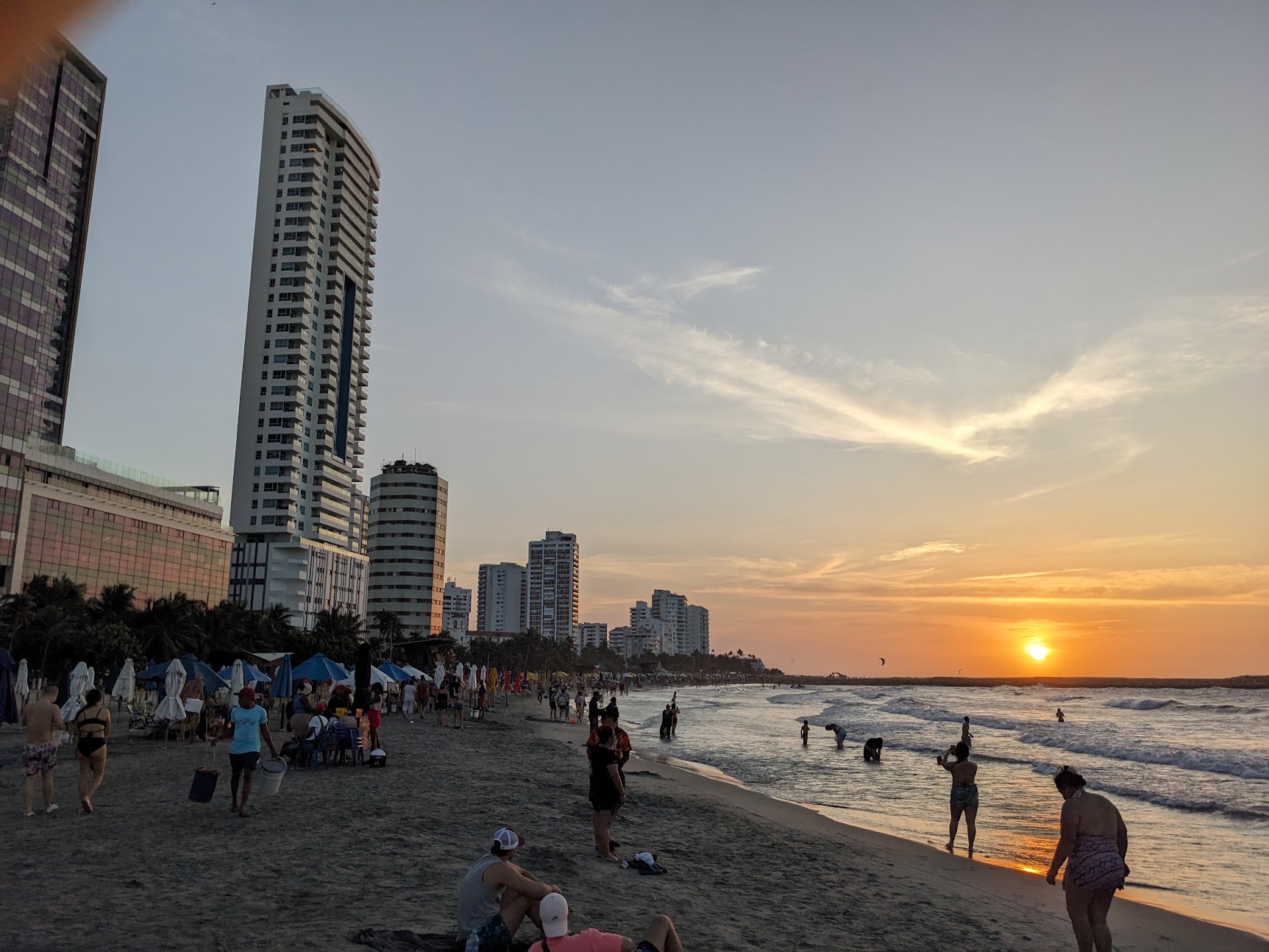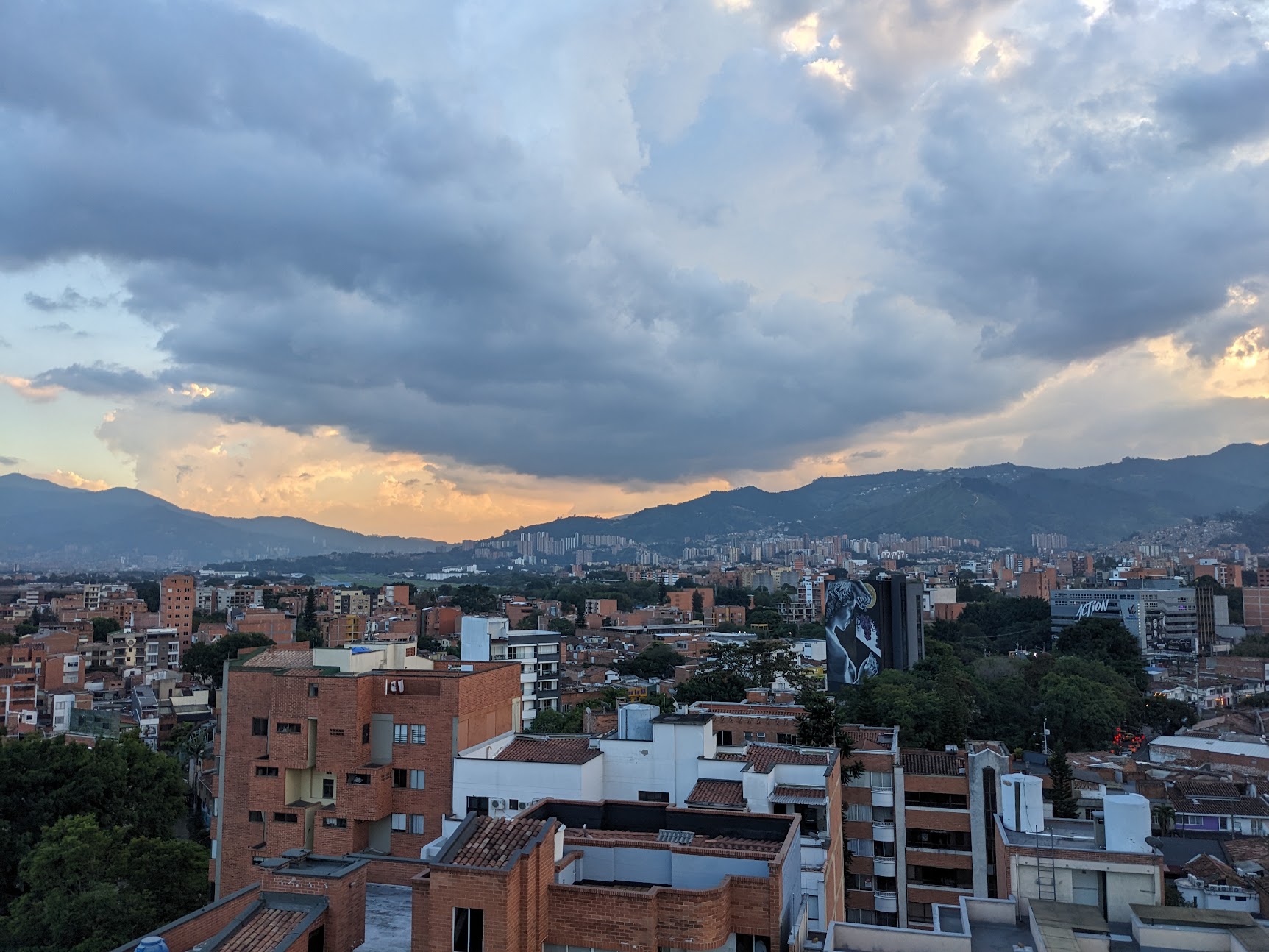Digital Nomad: Colombia
Table of Contents
Digital Nomad in Colombia
I’ve never met a person that really enjoys the Northeastern winters, we just deal with it. The past few winters, I have been traveling to warmer climates during a portion of it to get a break from the cold weather. I imagine at some point in my future, I will eventually be spending most of winter in another place. So this issue of “Digital Nomad” will be concerning my brief time spent in Latin America, specifically Colombia. I will briefly go over the two cities I visited and worked from, and at the end give some pros/cons if you are considering a trip like this.
First Stop: Cartagena

Cartagena was my first stop, and where we spent New Year’s. Due to the beautiful beaches, nice weather, and palm trees, it was reminiscent of Miami. The water isn’t Caribbean blue, but certainly nicer than East Coast summer beaches in addition to the water being warm enough to not flinch when you get into it. It made for a very nice miidday swim during the workday. I stayed in a beachfront hotel, so I cannot speak to the Airbnb scene here. In the one I stayed at, the internet worked good enough and was close enough to the downtown area where you can find nice restaurants and shopping.
My view on Cartagena for longer-term stays is that it’s nice enough for a week or so but I think after that time, you’d get bored. Unless you are super into beaches and can be at them every weekend for the rest of your life (not me) you would want more things to do. I was there only there for a few days and I thought it was a perfect amount of time. I also found the food service to be pretty lacking. Restaurants take a long time to make the food, and the quality is just ok.
Second Stop: Medellin

I stayed at an Airbnb in Medellin for a week, within a complex that looked to be for other foreigners as well in a nice quiet part of town. Medellin is at a higher elevation than Cartagena, and has a much milder climate. The average temperature year-round is 75 degrees Farenheit, and January is the driest month of the year so it a perfect time to go. The internet worked great, and the food here was much better than in Cartagena. Additionally, there is much more to do to keep you occupied for a few weeks to a month at least. If you get bored of the city and want to get out for a weekend, there are many tours you could take to go hiking or my personal favorite, visit a coffee farm (which I did at one point). The coffee in Colombia is incredible so if you are an addict like me, you will feel right at home.
Pros/Cons
Pros
Weather
The obvious answer here is the weather. Cartagena was hot/humid, while Medellin was milder but still warm. If you are looking for a winter getaway, it’s harder to find a nicer destination. Medellin specifically has probably the nicest weather I’ve ever experienced besides San Diego.
Cost
Most people understand that South America is generally cheaper and Colombia is no exception. The exchange rate is four million Colombian pesos to one US dollar. To be a millionaire in Colombia, all you really need to do is show up.
Food
There is no shortage of excellent food options. The Colombian (obviously) and Peruvian restaurants were numerous. I lost count of the amount of ceviche dishes I had, probably almost two dozen in my three weeks of travel I did there. There are great seafood options and the beef is imported from elsewhere in South America (Brazil and Argentina).
Cons
Language Barrier
Most people do not speak fluent English in Colombia, so I recommend to learn some Spanish or to ensure you have your cell phone charged and with service throughout your trip to translate for you. This got frustrating after a while. If you are doing an extended (month+) stay in South America, I would recommend taking a Spanish class or at the very least do daily lessons on Duolingo for at least six months.
Scams
Unfortunately due to the favorable exchange rate Americans have, you are a walking advertisement for scams, and even more so if you do not speak Spanish. At least once a day, we had to deal with one of the following:
- Taxi driver refusing to follow Google map and take us a longer way (Uber is not as widely used in Colombia)
- Taxi fares changing wildly with no explanation or reason
- Counterfeit money (we were given one at some point in the trip and it was refused later)
- Locals trying to short us on change because we didn’t know the language and the exchange rate is confusing
- Locals trying to charge us to park somewhere it was completely free to park
I’m definitely forgetting a few but these are the ones that were the most numerous. This got extremely tiring after a while, to the point where I was fairly burnt out by the time I was leaving. This is another strong reason to learn Spanish so you can fight back on some of this.
Conclusion
I enjoyed the brief time I had in Colombia and if I had the time to learn Spanish properly, I think it would be great for an extended stay. Medellin especially is a great option with the cheap cost of living and excellent weather. I would stay in the nicer neighborhoods though, or else you are a prime target for scams or robbery. This experience has taught me that there is definitely a mental/emotional “tax” to living abroad while working. Dealing with translation and the constant scams got tiring after a while and made me miss home. I wouldn’t expect local law enforcement to help either, especially if you have to translate through your phone. Did I mention you should learn Spanish?
I hope this article helped you understand what to expect if you are considering working remotely from Colombia. Until next time!